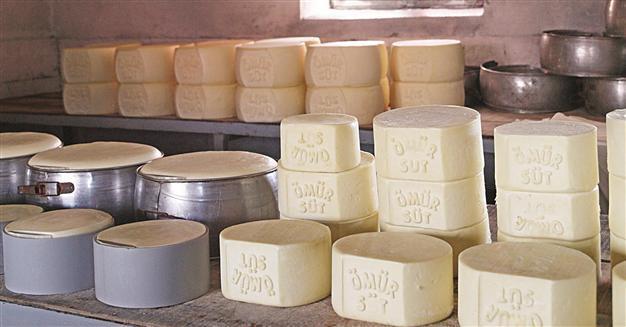Finest ‘kaşar’ cheese in Turkey made in Kars
Wilco van Herpen ISTANBUL - Hürriyet Daily News

Photos by Wilco van Herpen
As a Dutch guy I do not like the Turkish kaşar cheese. Especially the kaşar that I get when I buy toast in one of the buffets in Turkey. I’d prefer to eat the sole of my shoe – it has more taste and more flavor. I am not talking about white cheese, goats cheese, Van herbs cheese, or Tulum cheese; my problem is with simple kaşar. You may call me “cheese head,” I am. There is nothing better than a beautiful old Gouda or Edammer cheese, and do not forget old Amsterdammer with its own specific beautiful color and a taste. We Dutch know how to make cheese and most probably you (as a reader) know that as well.
But there is hope; there is good kaşar out there. Unfortunately, to find the nicest kaşar you have to go to Kars. This is not such a bad thing after all, as Kars is a nice place to wander around. There is plenty to see and to do there, but don’t forget - your aim should be to find the finest Turkish kaşar.
The best kaşar of the region I went there to find the best kaşar and for that I had to travel to a small settlement one hour from Kars. The place did not have a name, but it is here that they make the best kaşar of the region. It was spring, the snow was melting and in a couple of days the cows were going leave their stables to find the beautiful and characteristic herbs of the Kars region that gives the Kars cheese it’s specific taste. However, once the cows go into the green lands the people in the region stop producing kaşar and start making a kind of gravyer (Gruyere) cheese instead. I was there just in time to witness the making of the famous kaşar cheese.
I found a farmer who proudly showed me around in his stable. About 15 cows were standing side by side. One of the relatives of the men, a woman, was milking the cows. In the stable were a couple of veils and of course some cows, queued up one after another in a row. How is it possible that the best kaşar cheese comes from this region? If this was Holland it would definitely be impossible.

After putting the cheese in the mold and taking out
the surplus liquid, it is put away in a warehouse.
After a period of at least three months drying and
resting, the cheese is ready for consumption.
More rules, weaker systemWhile reading this you may wonder: is it worth going to look for this beautiful kaşar cheese? My answer is: yes!!! In Europe we are overprotected by rules and laws concerning hygiene. Some beautiful kinds of cheese in France and Italy have been forbidden by the European Union because they are made with raw milk. My opinion is that the more rules there are, the weaker our system will be, although of course hygiene is very important.
The milk the woman gathered from the cows was sent to a small cheese factory 500 meters further away. This factory was one of the places that give the kaşar cheese it’s status, it’s image. The kaşar cheese we generally eat is made in big factories that do not manage to give character to the cheese. I went to the factory, actually nothing more than a small, very small farm, compared to Dutch standards. When I entered the yard, I saw the house of the farmer/cheese maker on the left and the cheese factory on the right.
After pasteurizing the milk he added the rennet and left the milk to turn into cheese. When the milk turned into cheese it was pressed under a weight to get the unwanted water out of the mixture and then this mixture was thrown into a machine that boils the cheese. This is the part that, as a Dutch cheese maker, I do not understand. During my youth I used to work in a cheese factory and we never, I repeat never, cooked the cheese. But in Turkey, wherever I go, people boil cheese. I think this loses a lot of character from the cheese, but “burası Türkiye” (this is Turkey). Once you are able to touch the cheese again (because it was really burning hot) it can be put in a mold, but first the owner of this cheese factory found it necessary to knead the cheese mixture. So there he went, with his hairy hands. He kneaded and kneaded and finally he was happy. Yes, this was the right consistency.
 Quality guaranteed
Quality guaranteedThe cheese was put in the mold and pressed. In the mold you can find the name of the factory that makes the cheese so you always will know where the cheese has been made. Unfortunately, only the excellent kaşar cheese does something like this - you can consider it as like an “appellation de controlee” for French wines, the quality is kind of guaranteed.
It would be another step into the direction of entering the European Union and at least people in Turkey would know that they are buying a quality product. After putting the cheese in the mold and taking out the surplus liquid, it is put away in a warehouse. After a period of at least three months drying and resting, the cheese is ready for consumption. In spite of what you might think, I bought a couple of cheeses over there and ate them with pleasure. It is not always sterile environments that guarantee quality, sometimes we should just go back to the core of the making - raw milk, nice taste and handcraft.


 Quality guaranteed
Quality guaranteed